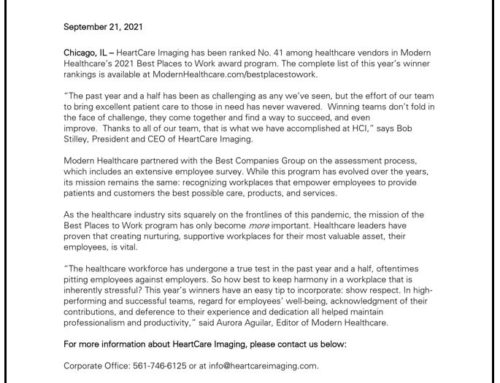<span style=”color: #000000; font-family: Calibri;”>In the day to day operations of a nuclear stress lab, stressing six to eight patients a day may start to get a little monotonous. Whether it be a chemical stress or a treadmill, it is the same routine. Prep the skin, put the patches on, explain the test… same thing day in and day out. It is very easy to become jaded by the “normalcy” we typically experience. But, what happens when it isn’t the same? What happens when the routine suddenly isn’t so routine anymore?</span>
<span style=”color: #000000; font-family: Calibri;”>There are many practices that will toss just anyone into the lab to monitor or “supervise” a stress test. It’s okay, there is a doctor in the building, right? Wrong! A subtle change in the ECG can indicate something major. What happens when that subtle change goes unnoticed or unrecognized?</span>
<span style=”color: #000000; font-family: Calibri;”>As a rule of thumb, the person directly supervising (meaning-in the room, actively watching the ECG) should be ACLS certified and trained on ECG interpretation.</span>
<span style=”color: #000000; font-family: Calibri;”>It is also a great idea for any other member of the stress team that is in the room during a stress test (ie: nuclear technologist, echo technologist, CNA, LPN, MA, etc.) to at least have a basic knowledge of ECG patterns, ST segment elevation and depression, as well as fatal rhythms. </span>
<span style=”color: #000000; font-family: Calibri;”>ECGs can change without warning. It is imperative that the staff are on the lookout for any change and that they are knowledgeable about what that change can mean.</span>
<span style=”color: #000000; font-family: Calibri;”>When the routine isn’t routine anymore, will you and your staff be prepared?</span>
<span style=”color: #000000; font-family: Calibri;”>Here are two blog posts that are informative and interesting, but also very entertaining that we would like to share. </span>
<span style=”color: #800080;”><a style=”color: #800080;” href=”http://www.healio.com/cardiology/learn-the-heart/blogs/stemi-mi-ecg-pattern”>STEMI – MI ECG pattern</a></span> and <span style=”color: #800080;”><a style=”color: #800080;” href=”http://www.healio.com/cardiology/learn-the-heart/blogs/ventricular-tachycardia-and-fibrillation-ecg”>ventricular tachycardia and fibrillation</a></span>







Leave A Comment